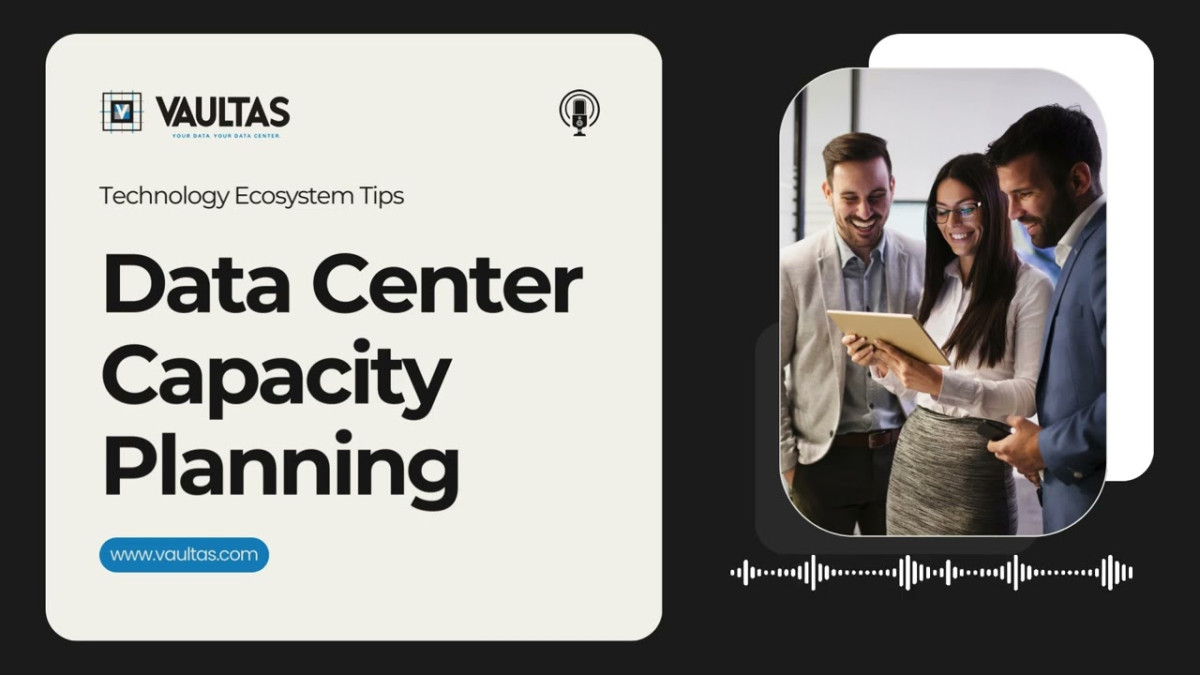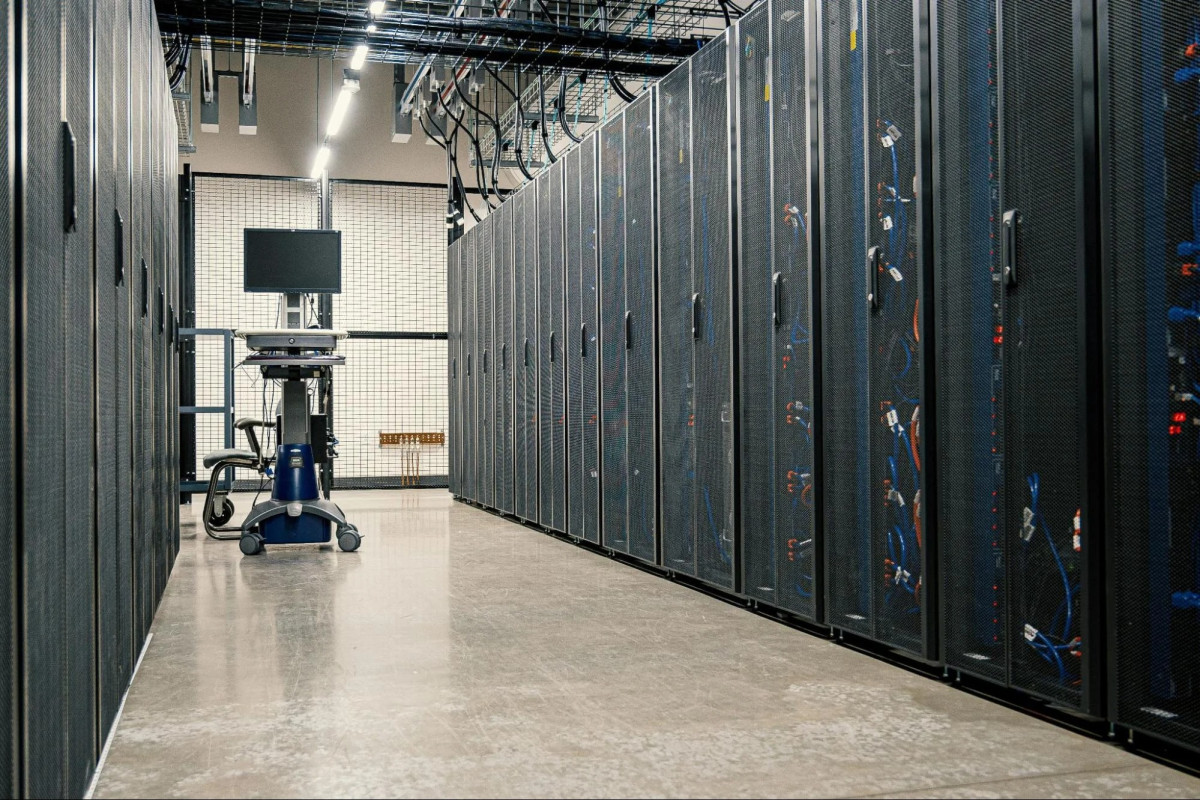Supporting Workloads with a Data Center Company in Minneapolis
Planning is vital across all industries, guiding daily operations and aligning teams with strategic goals. This is especially true for data centers, where effective planning significantly impacts functionality, performance, and user experience. This is where data center capacity planning can save you time and effort.
“Capacity planning makes sure that workload demands are met efficiently by assessing computing resources, cooling capacity, and power load,” said John Unger, President of Vaultas. “This approach identifies areas for improvement and potential risks. With it, leaders can fine-tune their data center operations for peak performance.”
In this blog post from a professional Data Center in Minneapolis , we’ll cover the basics of effective capacity planning, disciplines to keep in mind for all of your planning (from structural to data center space planning), to how you can make the most of your capacity planning and why it’s important to keep your planning future-focused.
Minneapolis Data Center Capacity Basics: What Drives Effective Planning
Effective data center capacity planning is critical for meeting your users’ and clients’ demands. It supports your computing resources, space, power, and cooling capabilities—keeping them optimized.
The capacity of your data center is determined by the needs of the IT equipment being hosted. Consider the power and cooling systems necessary to support this equipment, including the detailed measurements required to meet the critical needs of your IT systems.
Be aware, however, that your data center has limits on space, power, and cooling. While backup power and fault-tolerant servers improve uptime, they can reduce overall power capacity. Overestimating capacity also wastes money and draws power to idle servers. Underestimating leads to performance issues and downtime.
Proper capacity planning lets you measure demand, track trends, and anticipate future needs and let’s you:
- Reduce server over-provisioning
- Repurpose underutilized servers
- Improve your IT budget
- Adopt future technologies
In data center planning and design, there has also been an increased interest in environmental considerations. (Data centers in just the U.S. use 90 billion kilowatt-hours of electricity a year.) For this, more are evaluating factors such as electrical power capacity, resource requirements, and cooling capacity to achieve efficient utilization of energy and water.
The Disciplines That Guide Data Center Planning
Before we get into capacity planning, we need to look at the big picture behind what goes into housing an effective data center: You need to integrate both building-focused and data center-specific disciplines. Let’s take a look at what these cover.
Building-Focused Disciplines
Architecture
Design your data center layout to meet the needs of all disciplines. Choose materials that comply with local building codes and data center standards, focusing on fireproofing and soundproofing.
Structural Engineering
Ensure your data center’s physical structure can support the weight of your equipment. Design efficient layouts to reduce energy costs and integrate fire suppression systems for safety.
Mechanical Engineering
Focus on proper cooling for your data center. Plan for cooling capacity and efficiency, control temperature and humidity levels, and manage noise pollution from cooling mechanisms.
Electrical Engineering
Integrate power supply into the data center design. Plan for power distribution, backup power, and UPS systems. Make sure all components connect to a common electrical source for consistent uptime and protection against surges and outages.
Security Engineering
Design and implement comprehensive security systems. This includes firewalls, access control, surveillance, and more. Fire engineers should design fire suppression systems and create disaster response procedures.
Data Center-Specific Disciplines
Power
Determine your current and future power requirements. Assess the power-carrying capacity of cable conductors, switching characteristics, and upgradeability.
Cooling
Evaluate your cooling needs by assessing chillers, HVAC systems, or CRAC systems. Plan for redundancy and future upgrades to maintain optimal operating temperatures and prevent overheating.
Networks
Plan for internet and wireless connection redundancy. Focus on connection speeds and physical connections to guarantee reliable and fast access to your data.
Data Storage
Assess your current storage capacity and plan for redundancy and backups. This ensures your data is always accessible and protected against loss.
Sustainability
Evaluate energy efficiency and consider environmentally responsible solutions. Integrate green practices to reduce your data center’s carbon footprint and operational costs.
What You Should Keep in Mind for Data Center Capacity Planning
With overall data center vacancies at an all-time low of 3.3%, it is critical now more than ever to work with a trusted advisor to help guide you through this process to figure out what is best for your organization. Plus, effective capacity planning helps you make sure your data center meets essential security and reliability standards.
Here’s what goes into making it work:
- Calculate your utilization rate: Assess how much of your data center’s capacity is currently in use.
- Identify outdated infrastructure: Pinpoint components that are nearing the end of their lifecycle or are no longer efficient.
- Optimize resources: Determine which resources can be increased, decreased, or replaced to improve performance.
- Plan and implement changes: Design new resources or capacity changes and enforce these designs effectively.
Tools and Techniques That Can Help
Leverage capacity planning software tools, like 3D renderings with automated asset discovery, to calculate necessary resources and power draw for current and future operations.
Effective approaches to capacity planning include:
- Capacity benchmarking: The most comprehensive and costly method. It involves setting up a configuration and testing its performance under load. This requires a fully-configured system for accurate results.
- Capacity modeling saves time and money by testing different solutions without implementation. It includes:
- Simulation modeling: Versatile and accurate but time-consuming.
- Analytic modeling: Fast and accurate, ideal for quick assessments.
Begin with agreed-upon service performance metrics. Define clear goals, like storing data for a specific period or maintaining application response times. Use sophisticated load calculations to ensure optimal performance both during normal and peak times.
Here’s How to Take a Hands-On Approach Data Center Capacity Planning
Determining the required capacity for your data center is a hands-on task that ensures your IT needs are met without risking downtime.
Room-Level Capacity Planning
This approach takes a look at the entire data center space. This includes evaluating the total capacity needed to support all components, like server racks, power, cooling, and network infrastructure.
Row-Level Capacity Planning
This granular approach allows for precise capacity planning, tailored to the specific power and cooling requirements of each row. Identify the current and future needs based on the devices in each row, analyze your infrastructure to ensure it can meet these requirements, and develop a plan to address any shortfalls.
Rack-Level Capacity Planning
Assess the power and cooling needs of each piece of equipment, ensure there’s adequate space for cable management and airflow, and confirm that the rack can support the equipment’s weight. Calculate the number of devices that can fit in the rack and their power requirements.
Keep Your Data Center Plan Future-Forward
Even when you’ve finished your capacity planning, you’re not truly finished. With IT resource usage fluctuating daily, and sometimes hourly, you must constantly monitor and adjust your infrastructure. Today’s IT landscape demands that you respond to capacity shifts almost instantly, making long-term planning essential.
Knowing your current usage metrics inside and out is vital before planning for future equipment purchases. You need continuous insight into these metrics—providing a complete, real-time view of your data center’s performance.
Keeping your capacity planning future-focused means you’re always ready to scale, adapt, and optimize your data center.
Optimize Your Data Center for the Future
At Vaultas, we specialize in comprehensive data center planning that meets today’s business demands and prepares you for tomorrow’s challenges. Our team will develop a custom plan, design your data center to meet your specific goals, and support compliance every step of the way.
We’ll determine your:
- Data center floor space layout
- Necessary power requirements
- HVAC requirements
- Network providers
Work with experts from Minneapolis Data Center with over 40 years of industry knowledge and experience. Contact us today.












